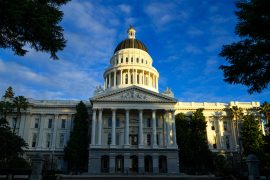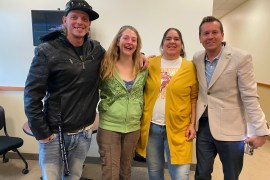The Los Angeles-area chapter of the Alzheimer’s Association is splitting from the national organization, the latest in a string of departures that could impact the national group’s bottom line.
The chapter, which covers Los Angeles, Riverside and San Bernardino counties, announced its decision Thursday to separate and form its own organization. Chapters in San Diego and Orange County, California announced similar plans late last year, as did chapters in New York City and New Jersey.
The departures come after the Alzheimer’s Association voted last fall to consolidate into one national organization that will centrally manage the funds and programs for people living with the disease throughout the United States.
Currently, local chapters are affiliated with the umbrella national group and help fund its operations and research. But they are independent nonprofits that keep about 60 percent of the money they raise and largely set their own priorities on how to spend it. Under the new structure, the Chicago-based national headquarters will be the only legal entity of the Alzheimer’s Association.
The Los Angeles-area chapter decided to go out on its own because of concerns that the consolidation would take away local flexibility and make it harder to provide services tailored to the diverse population of Southern California, said Susan Galeas, president and CEO of the new organization, known as Alzheimer’s Greater Los Angeles.
Galeas said she and the local board also feared the national organization wouldn’t place as much of a priority on funding direct care for people with Alzheimer’s and their families as the local chapter does.
“There was a legitimate concern that would diminish over time,” she said. “It was in the best interest of the communities that we serve – and the growing number of people who are going to be affected by this disease — to make a change.”
The national board of the Alzheimer’s Association voted in October to combine its operations and gave its 54 chapters until Jan. 15 to decide whether to join. The chapters are expected to merge with the national entity by summer, said Stewart Putnam, chair of the national board of directors.
Putnam said combining forces will help the organization be even more efficient in tackling a disease that impacts 5 million people and is expected to affect far more in the future. There is no cure for the brain disease, which weakens people’s memory and cognition.
“We need to be taking care of more people, we need to be raising more money for research and we need to increase awareness and concern about the disease,” Putnam said. “By working together as one organization, we believe we can be more effective at that.”
Other similar nonprofits such as the American Cancer Society and the American Heart Association have already consolidated. The model is a better way to raise an organization’s profile, have significant national impact and reduce redundancies, said John Graham, CEO and president of the American Society of Association Executives.
“Imagine if you were trying to fight a war and every platoon could make its own decisions,” said Graham, who oversaw a consolidation as head of the American Diabetes Association.
But the process of consolidation is not always smooth, Graham said. Local chapters don’t want to give up control, especially over money. “It is a bumpy ride,” he said.
Putnam said there would still be Alzheimer’s Association chapters throughout the country, including in the areas that have decided to disaffiliate from the national organization.
Los Angeles and the four other chapters that have split from the association will no longer be able to use the well-known name. They will, however, be able to retain 100 percent of the money that they raise locally.
Galeas said the new Los Angeles-area organization is already up and running and she is confident that it will be able to continue attracting donors and providing support, education and other services. The group also plans to form new partnerships with local research organizations and to expand its programs across the region, she said.
“We are really looking to grow,” she said. “In order to grow, we have to be nimble and we have to be creative.”
Blue Shield of California Foundation helps fund KHN coverage in California.






